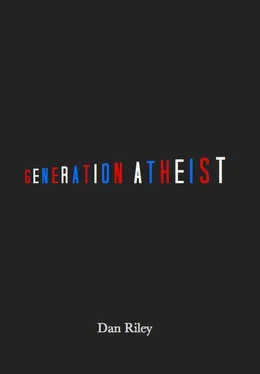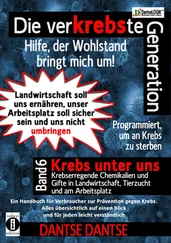I was scheduled to go through the Endowment ceremony on the 10th of June, six days prior to start of my mission. Many Christian sects believe that entrance to heaven requires that the baptismal ordinance is performed, but Mormons believe that baptism is but one of several ordinances that are requisite to enter the highest kingdom of heaven, the Endowment being one of them. Receiving the Endowment is a ceremony that can only take place in a Mormon temple, and most Mormons do so either immediately before leaving for a mission or immediately before marriage.
I had been aware of the existence of the ceremony, and I knew that it was at the time of the Endowment that members begin to wear garments — commonly called “Mormon underwear” by non-members. I knew that the garments were a bit odd from an outsider’s perspective, but I grew up seeing my parents and other family members wearing them, so it didn’t seem particularly strange to me. I had been taught that they are meant to serve as reminders of the covenants that are made in the temple, and that was acceptable enough. Growing up, I had occasionally heard Apocryphal Mormon folk stories about garments providing supernatural protection for, for example, people who had been lit on fire in a horrible accident, having burns everywhere but where their garments touched their bodies. I had been taught that God rewards obedience, and it seemed reasonable that He might cause miracles for those who wore the garments as they had been commanded.
Other than the receiving of garments, I knew nothing of the Endowment. I took a preparatory course from the Church, but the focus of the course was to prepare me to be in the right spiritual state to receive it. The course said nothing about the actual content of the ceremony. As we drove to the temple, my parents and grandmother told me that I needed to keep in mind that what takes place in the temple is highly symbolic and that I may need to go for many years before finally grasping the true meaning of it all. I was excited and intrigued, if a little nervous, as we entered together.
To publicly discuss the ceremony outside of the temple is firmly forbidden. I know many ex-Mormons who still refuse to talk about the ceremony because of how badly it would be seen by their Mormon friends and family. What follows is my account of the ceremony — readers that would be offended by the same ought to skip this section.
Though it was over five years ago now, and the details are a bit fuzzy, I recall most of that day quite clearly. I had always liked the temple. It is built and designed for calmness and serenity — the building itself is remarkably soundproof, and the interior is designed to maintain that. Aged temple workers in white flow through the various rooms, keeping everything in order while speaking only in whispers. One temple worker sits at an elevated white desk at the entrance with a book of names before him, ensuring that only members who have been approved by their bishops — holding a card called a Temple Recommend — enter.
I entered the Spokane, Washington temple with my parents and grandmother. The man at the front desk smiled as he took my Recommend, asking, “First time?” I nodded, and he put his arm around me as we walked toward a small office behind him, where the temple president was waiting. He must have been in his sixties, and I remember him smiling warmly as he shook my hand. He explained that I would first need to go to the locker rooms to change into my temple clothes, which my parents had purchased and brought with them. I was to be washed and anointed, and then, the Endowment would proceed. “At some point in the ceremony,” he told me, “you will be asked for your second name. This second name is your divine name, your true name, and the name that you were known by before this life and will be known as after this life.” He admonished me to never share my second name with anyone, as the Lord had said that anyone who knew your true name would have power over you. He leaned over his desk as my parents turned away and whispered, “Barnabus.” As I mulled over the bitter-tasting realization that I would be known as Barney for the rest of eternity, the president offered to give a prayer before we continued.
My mother and grandmother went to the left while my father and I went to the right, heading to our respective changing rooms. As my dad started pulling the clothes out of the bag he had brought, I noticed a man walking about in what I assumed was the full temple dress. I caught my breath in surprise. The hat looked like a white, puffy beret, listing slightly to one side. He wore a white toga-like garment with a white sash running from one shoulder to the opposite hip. The most striking piece was the bright green apron around his waist. It was tied in the back and ran from his waist to near his knees and was embroidered with fig leaves. Rather surprised, I figured that the man must have been wearing something special to perform a certain ceremony. I then saw my dad pull out a set of the same clothes for each of us. As he put on the temple clothes, I put on a simple toga-like robe for the washing and anointing ceremony. The toga had no sleeves, was cut below the arms to the waist, and I wore nothing beneath it.
We walked to a small room that was subdivided into four sections by tall curtains. My dad waited near the entrance of the room, and an elderly temple worker entered with some consecrated oil. He said nothing to me but poured a little bit on my head and said a blessing. We then proceeded through the other three sections of the room. In each room, he would put a little bit of oil on different parts of my body and say a blessing. I was a bit concerned that one of the blessed parts would be my genitals and was relieved when the ceremony ended without anything of the sort.
We entered a central room, which looked like a small movie theater with a single aisle in the middle. Facing the screen, all of the men were seated on the right, and the women were seated on the left, where I saw my mother and grandmother. Their clothes were similar to the men, but where the men wore hats, the women wore white veils that covered their faces. Temple workers stood at the corners and one, who directed the members to their seats and conducted the ceremony, stood in front.
I was utterly confused and dismayed. I had been raised in a church that eschewed silly costumes and rituals; my Mormon friends and I made fun of Catholics for all of their odd pomp and Latin. Mormonism had always seemed to me to be predicated upon the more logical Protestant notion that God really doesn’t care what costumes you wear or what motions you go through, but rather that He cares more about the substance of your heart. I believed that I knew Mormonism inside and out. Yet, here I was, sitting amidst a room full of people in bizarre costumes with secret names in a ritual that I couldn’t connect to anything familiar, no matter how I tried. As I looked at the screen before me, I hoped that the film that would be played would show that the whole thing had been an elaborate Candid-Camera-esque prank on my behalf. Unfortunately, that was not the case.
The film appeared to have been made in the 80s, judging from the production quality and haircuts of the actors. It began in the heavens, showing the story of the preexistence, in which our spirits dwelt prior to deciding to come to Earth. It went on to show God and Jesus creating Adam and teaching him that there are names, signs, and tokens that he needed to know in order to return to heaven, narrating something to the effect of “and then Elohim — the name of God according to Mormon belief — taught Adam the signs and tokens of the first order of the Aaronic Priesthood.”
The film then paused, the lights raised, and the temple worker who conducted the ceremony demonstrated the signs and tokens that God was referring to. The people participating in the ceremony turned to one another and performed the signs and tokens, and the film resumed. This occurred several more times. I don’t recall all of the various names, signs, and tokens, but I recall that the signs looked like something a football referee would signal when making a call. The tokens took the form of various handshakes — placing a thumb in between the first two knuckles of the other hand, for example. I did my best to remember all of the names, signs, and tokens but was too overwhelmed to do so very effectively.
Читать дальше












